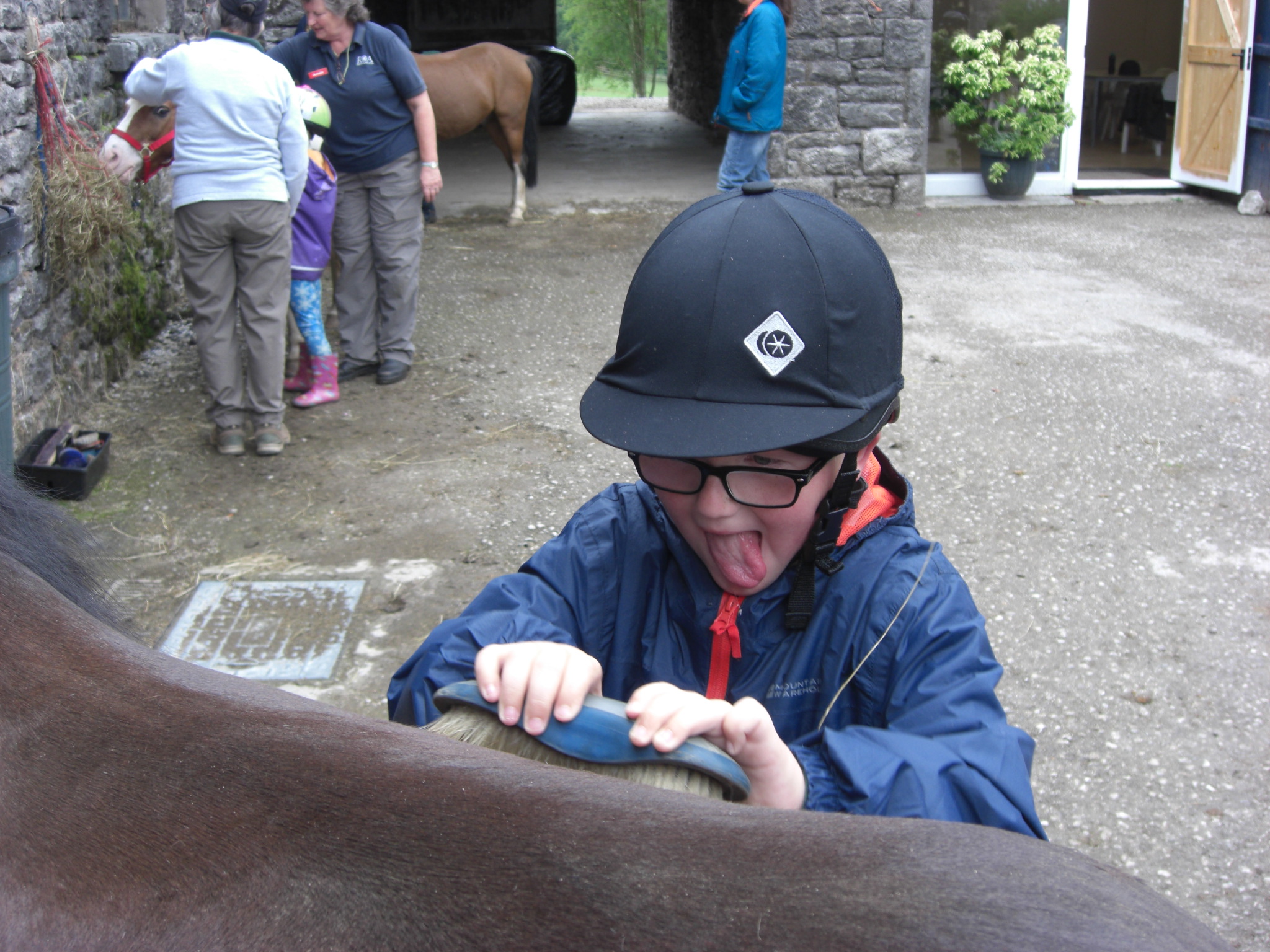Once desirable, it is now seen as aggressive, virulent and definitely not a plant to be trifled with – Japanese knotweed, that is.
Japanese knotweed, a native of eastern Asia, was welcomed to Britain’s shores as an ornamental ‘architectural’ garden plant in the early 1800s. Its popularity was short-lived; less than a century later, it was recognized as an invasive species, first recorded in the wild in 1886 in Glamorgan, Wales. By 1981, it was listed in the Wildlife and Countryside Act, which charged landowners with a responsibility to prevent its spread into the wild. It is found throughout Britain; only the Orkney Islands are exempt.
According to the Scottish Environment Protection Agency (SEPA), the three species of invasive knotweed in the UK are the widespread Japanese Knotweed (Fallopia japonica), Giant Knotweed (Fallopia sachalinensis), and a hybrid Knotweed (Fallopia x bohemica). The plant’s dense cane-like clumps can reach 3 metres tall, with shoots and leaves up to 120mm long. It spreads underground with rhizomes that can extend seven metres outwards and up to two metres deep. Rhizome fragments as small as 10mm can produce new plants, although the plant’s seeds are sterile.
While the Non-native Species Secretariat (NNSS) classifies Japanese knotweed as ‘mildly invasive in GB and elsewhere (such as Europe) outside its native range’, with limited ecological impact, it adds that the plant is ‘possibly the most economically important invasive non-native species in GB, as eradication can be expensive.’
Expensive ‘waste’
Japanese knotweed and infested soil is classified as ‘controlled waste’. According to an Environment Agency report (2006), most Japanese Knotweed infestations in development sites started as a result of fly-tipped waste, with plant fragments ‘very likely to survive for prolonged periods (many years).’
For both contractors and homeowners, legislation means that evidence of the plant on a site, (or close to it), can be an expensive discovery. Landowners can be forced to clear land infested by Japanese knotweed under the Town & Country Planning Act section 215 for Local Authorities.
According to NNSS, eradicating the plant from construction sites ‘can cost well over £1,000 per square metre and, as a controlled waste, it can be expensive to dispose of the ‘contaminated’ topsoil.’
The Non-Native Species Policy Review estimates the cost of countrywide control of the plant (‘were it to be attempted’) at £1.56 billion. It notes that a site (30mx30m) in Wales cost developers ‘an extra £52,785 to deal with the removal of knotweed’. The worst case scenario for a 1m2 patch of knotweed on a development site has been estimated to be up to £54,000.’ (Based on the 7m by 3m buffer zones – exceptional!)
Financing difficulties
Financing may be refused on property or land with Japanese knotweed on or near it. David Layland, Joint Managing Director at Stem Injection Systems and its sister company Japanese Knotweed Control gets phone calls from property buyers refused finance by prospective mortgage lenders – because of Japanese knotweed on the site.
‘The biggest risk is constructing on top of the plant,’ says David. ‘It can create structural problems. However, as long as it’s managed correctly, the risks can be minimal.’
To ‘accurately assess and quantify’ the risk of Japanese knotweed found in and around residential property, the Royal Institution of Chartered Surveyors’ (RICS) Japanese knotweed information paper, provides cross-industry approved advice for surveyors and banks. It offers four classifications to measure the extent of the risk, and the threat it poses to property.
The RBS Group says it was consulted on the RICS paper ‘in our role on the council of mortgage lenders, and [we] fed back our thoughts at an industry level.’
The bank adds: ‘We look at each and every application for lending on a case-by-case basis before making a decision to lend.’ It considers knotweed severity and proximity to the property, using the surveyor’s recommendations, and “shares the surveyor’s report with customers, to discuss what difficulties are presented in each individual case.”
The plants’ proximity to property, and possibility of endangering the property and/or its foundations are also considered by HSBC bank. It works with ‘an approved panel of valuers who are RICS accredited, and familiar with these guidelines.’ It adds that a property valuation would ‘usually identify issues and recommend any specialist reports that would enable an Underwriter to assess whether the property was suitable to lend against.’
Mark Thompson, Director at Environet Uk Ltd says: ‘When a company that’s deemed acceptable is used to eradicate the knotweed and provide a guarantee, then the banks will usually lend.’ The company offers a Japanese Knotweed identification guide for surveyors.
Controlling the invader
Once identified, Japanese knotweed may be controlled by chemical treatment, physical removal or natural (bio-control) methods.
David points out that the plant’s root structure is very distinctive, with a bright orange rhizome that ‘snaps like a carrot, unlike tree roots that bend.’ Growth pattern depends on the soil, as it grows deep on sandy soil, and spreads out on clay soil.
The Japanese Knotweed Alliance (JKA) suggests either chemical control or physical removal by cutting the plant, ‘taking care that fragments of splintered stem are not spread.’ JKA notes that ‘the young shoots of Japanese knotweed can also be eaten by sheep, goats, cattle and horses… However, this will not eradicate Japanese knotweed and the plant will continue to grow once grazing ceases.’
Ian Graham, Managing Director at Complete Weed Control (CWC), suggests ‘careful consideration of the site, its history, planned development, level changes, timescales, buried services and previous attempts at control (or concealment).’ He adds: ‘Minor modifications to a planned build can create the opportunity to resolve matters with ease.’
For Environet, dealing with Japanese Knotweed is a daily event. ‘We kill knotweed every day of the year,’ says Mark. ‘Using our Xtract™ method, we process the soil on site, rather than incur the expense of trucking to landfill. The knotweed is incinerated; the soil is free of the plant and can be reused on site.’
He adds that the process is half the cost of ‘dig and dump’, more environmentally friendly, and guaranteed.
Cambridgeshire-based The Property Care Association’s list of suggested actions includes cutting or hand pulling the plant ‘to avoid any dispersal of cut fragments’, pointing out that a fragment of the cut rhizome can regenerate. It cautions: ‘Any soil obtained from ground within 7m horizontally and 3m deep of a Japanese knotweed plant could contain rhizome.’
Bio-control methods include using the psyllid Aphalara itadori, which sucks the sap from the plant. Measuring about 2mm in length, psyllid is a knotweed specialist and can only complete its development on Japanese knotweed. The risk of damage to native plant species has been shown to be very low indeed, according to The Centre of Agricultural Bioscience International (CABI), a not-for-profit science-based development and information organisation. It is carrying out the Government-approved release of the insect as a control agent for Japanese knotweed in the UK.
CWC offers four basic industry rules, include always surveying a site for Japanese knotweed, never starting site clearance before determining the presence of the plant, isolating it – ‘not doing so has cost companies large sums of money’, and taking time to consider all options ‘before embarking on what could be a very expensive and fruitless exercise.’
David remarks that the key is dealing with the plant as soon as it’s found: “Yes, it’s a problem, but it’s not unsurmountable. Identified early, dealt with and well-managed, means spending hundreds – instead of thousands – of pounds. That’s the crucial thing.”
And, as Ian points out: ‘Don’t forget that we are dealing with a weed here, not radioactive waste or a killer virus.’
(Originally published in The Landscaper magazine)





